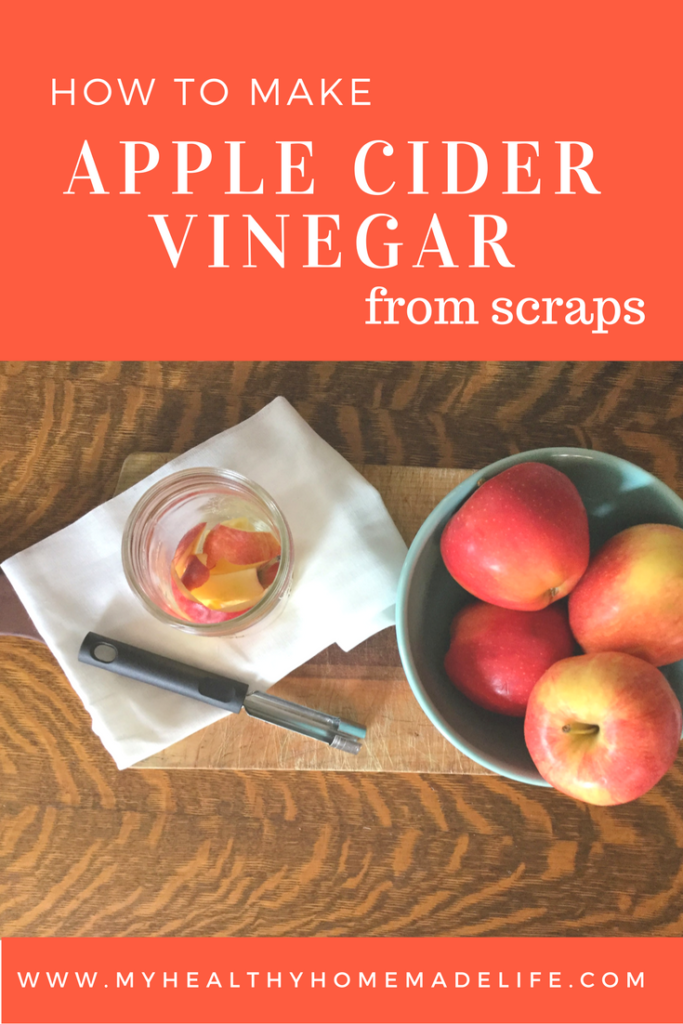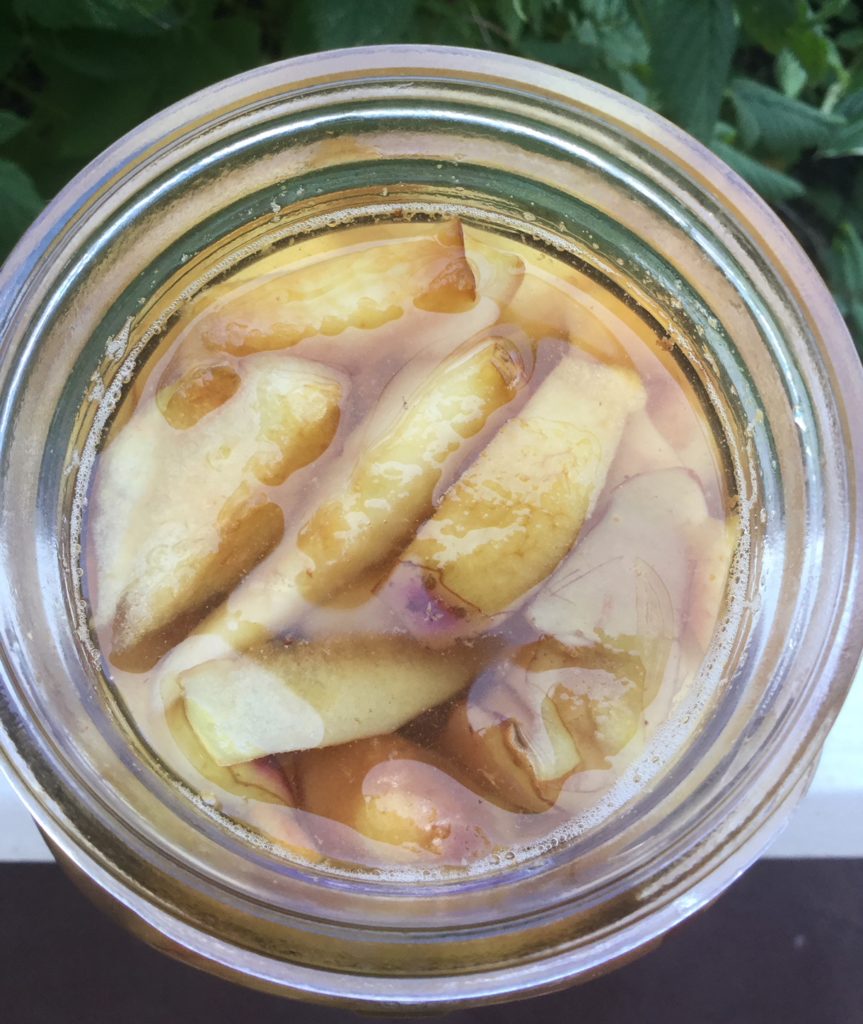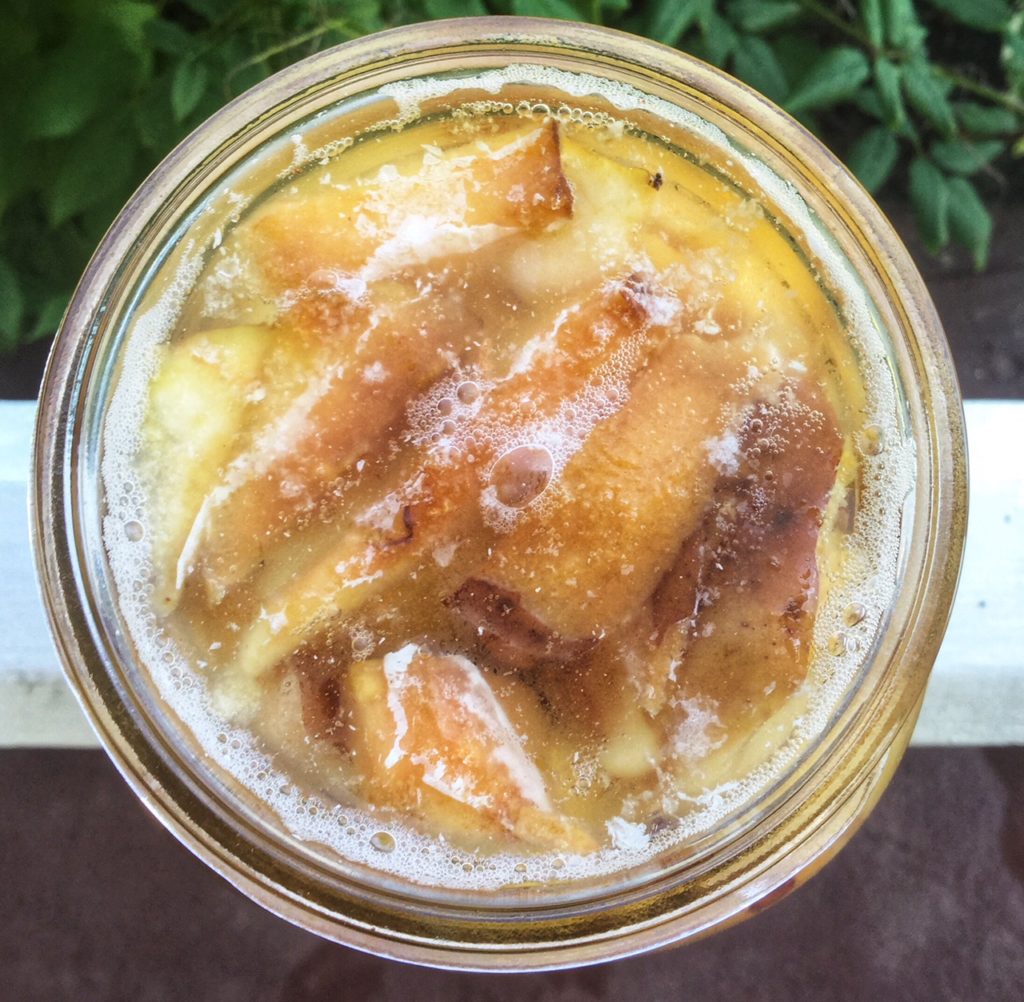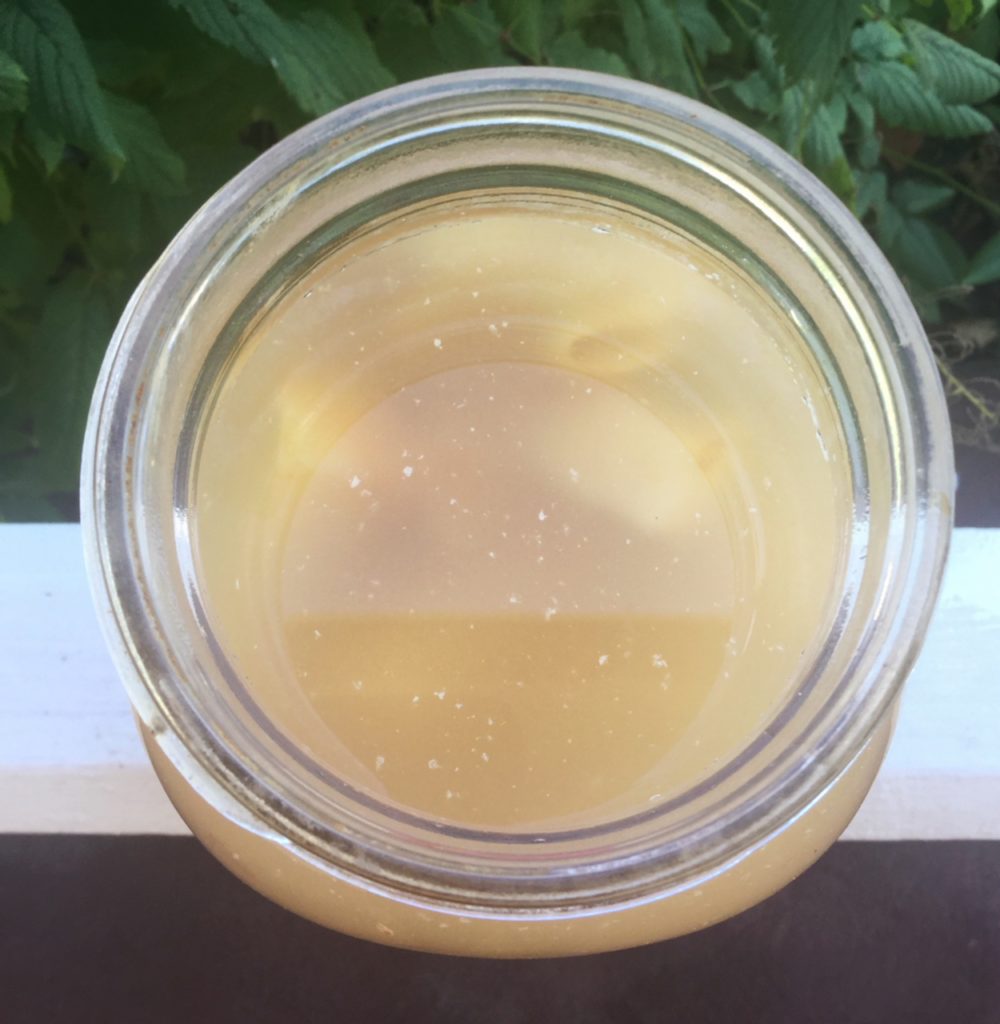I made apple cider vinegar for the first time last year and I couldn’t believe how easy it was! With very little effort, I made enough apple cider vinegar to last me all year!
What I especially love about the recipe I’m sharing with you today is we’re using ONLY apple scraps.
The perfect time to make your apple cider vinegar is on the same day that you’re also making apple sauce or apple crisp and you’ll have a lot of peels and cores left over. Instead of tossing them in the compost or the garbage, you can use them to make your very own raw and fermented apple cider vinegar. It’s extremely easy!
How to Use Homemade Apple Cider Vinegar
-
to relieve a sore throat, gargle with a small amount of apple cider vinegar
-
to freshen breath, use as a mouthwash (it will kill any bacteria in your mouth)
-
dilute with water for a facial toner. This works very well for acne.
-
use in homemade salad dressing (such as this one)
-
take 1 tsp-1 tbsp apple cider vinegar mixed with warm water & small dollop of raw honey (optional) as a morning tonic. This did wonders for my chronic sinusitis!
-
make a “dairy free” buttermilk by adding 1/2 tsp apple cider vinegar to 1 cup of almond milk
-
make Herbal Vinegar
How to Make Homemade Apple Cider Vinegar
What you’ll need:
-
1 wide mouth quart jar
-
1 coffee filter or piece of muslin
-
a rubber band
-
apple peels & cores, enough to fill a quart jar (preferably organic)
-
1/8 cup raw apple cider vinegar with mother (I recommend this brand
)
-
a small dollop of raw local honey (about 1 tbsp)
-
filtered or non-chlorinated water (enough to cover the apple scraps)
Instructions:
Place the apple scraps (peels and cores) in a quart jar. Add apple cider vinegar, honey and enough water to fill the jar. Make sure all your apple scraps are covered with water.
Stir well and cover with a piece of muslin or a coffee filter secured with a rubber band. It’s important for the mixture to get plenty of air while the fermentation process is taking place. Store your jar at room temperature, out of direct sunlight. I like to leave my jar on the counter so I don’t forget about it!
Within 24 hours, you may see the first bubbly signs that fermentation is underway.
By the end of day 2, serious foaming should be underway, and you may see the gaseous bubbles moving much like carbonation bubbling up in a glass of soda.
Day 4, you’ll notice even more bubbles. Give your vinegar a stir and make sure your apples stay covered. Add more water if needed.
You may notice that your cover (coffee filter or muslin) is getting wet from all the bubbles. Change the cover as needed. Things will settle down in a few days. Wipe down the rim of the jar if any scum has developed during fermentation
Within a few days, you’ll notice the primary fermentation activity has settled down. Set your vinegar aside and stir it daily for the next several weeks. Make sure all of your apple scraps remain covered by water.
You may notice around week 4, that a film (a “mother” that is full of “friendly” bacteria) has formed across the top of your apple cider vinegar. This indicates the secondary fermentation is progressing nicely.
By week 5, the mother will have increased significantly, and it’s time to taste your vinegar! You may choose to leave it for another week or two or you may strain it and use the mother to start another batch of apple cider vinegar.
Store your vinegar in a cool, dark place. The apple cider vinegar will last indefinitely and the flavor will develop and evolve over time. It does not need to be refrigerated.
Enjoy!
–Jen
Jennifer Prentice @ My Healthy Homemade Life
Yields 1 quart
How to Make Homemade Apple Cider Vinegar
A homemade apple cider vinegar made with apple cores and peels. Ready in 5 weeks.
Ingredients
- apple peels and core (preferably organic) enough to fill a glass quart jar
- 1/8 cup raw apple cider vinegar
- 1 tbsp raw, local honey
- filtered, non-chlorinated or distilled water
Instructions
- Place the apple scraps (peels and cores) in a quart jar. Add apple cider vinegar, honey and enough water to fill the jar. Make sure all your apple scraps are covered with water.
- Stir well and cover with a piece of muslin or a coffee filter secured with a rubber band. It’s important for the mixture to get plenty of air while the fermentation process is taking place. Store your jar at room temperature, out of direct sunlight.
- Within 24 hours, you may see the first bubbly signs that fermentation is underway.
- By the end of day 2, serious foaming should be underway, and you may see the gaseous bubbles moving much like carbonation bubbling up in a glass of soda.
- On Day 4, you should notice even more bubbles. Give your vinegar a stir and make sure your apples stay covered. Add more water if needed. You may notice that your cover (coffee filter or muslin) is getting wet from all the bubbles during this peek in fermentation. Change the cover as needed. Things will settle down in a few days. Wipe down the rim of the jar if any scum has developed during fermentation.
- In a few days, the primary fermentation activity will have settled down quite a bit. Set your vinegar aside and stir it daily for the next several weeks. Make sure all of your apple scraps remain covered by water.
- You may notice around week 4, that a film (a “mother” that is full of “friendly” bacteria) has formed across the top of your apple cider vinegar. This indicates the secondary fermentation is progressing nicely.
- By week 5, the mother will have increased significantly, and it’s time to taste your vinegar! You may choose to leave it for another week or two or you may strain it and use the mother to start another batch of apple cider vinegar.
- Store your vinegar in a cool, dark place. The apple cider vinegar will last indefinitely and the flavor will develop and evolve over time. It does not need to be refrigerated.
7.8.1.2
16
https://www.myhealthyhomemadelife.com/recipe/how-to-make-homemade-apple-cider-vinegar/My Healthy Homemade Life is a participant in the Amazon Services LLC Associates Program, an affiliate advertising program designed to provide a means for sites to earn advertising fees by advertising and linking to Amazon.com.

| Passive Time | 5-7 weeks |
| Servings |
quart
|
Ingredients
- apple peels & cores (preferably organic) enough to fill a quart jar
- 1/8 cup raw apple cider vinegar
- 1 tbsp raw, local honey
- filtered or non-chlorinated water enough to cover the apple scraps
Ingredients
|

|
Instructions
- Place the apple scraps (peels and cores) in a quart jar. Add apple cider vinegar, honey and enough water to fill the jar. Make sure all your apple scraps are covered with water.
- Stir well and cover with a piece of muslin or a coffee filter secured with a rubber band. It’s important for the mixture to get plenty of air while the fermentation process is taking place. Store your jar at room temperature, out of direct sunlight.
- Within 24 hours, you may see the first bubbly signs that fermentation is underway.
- By the end of day 2, serious foaming should be underway, and you may see the gaseous bubbles moving much like carbonation bubbling up in a glass of soda.
- Once the primary fermentation activity has settled down, set it aside and stir it daily for the next several weeks. Make sure all of your apple scraps remain covered by water.
- You may notice around week 4, that a film (a "mother" that is full of "friendly" bacteria) has formed across the top of your apple cider vinegar. This indicates the secondary fermentation is progressing nicely.
- By week 5, the mother will have increased significantly, and it's time to taste your vinegar! You may choose to leave it for another week or two or you may strain it and use the mother to start another batch of vinegar.
- Store your vinegar in a cool, dark place. The apple cider vinegar will last indefinitely and the flavor will develop and evolve over time. It does not need to be refrigerated.
Recipe Notes
Recipe by Jennifer Prentice @ www.myhealthyhomemadelife.com
Share this Recipe










 Save Recipe
Save Recipe

